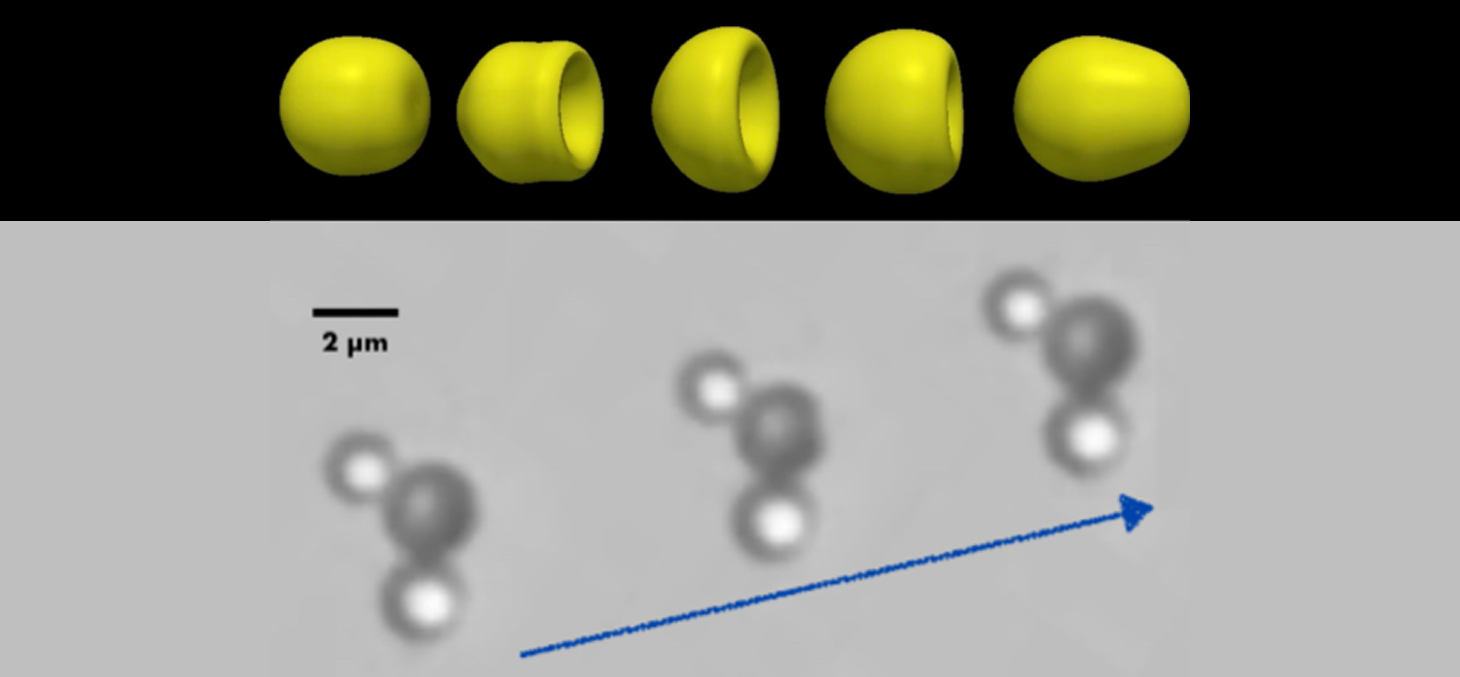- Share
- Share on Facebook
- Share on X
- Share on LinkedIn
Publication
On November 24, 2023

An international team has shown that the’ buckling instability of’a layer of lipids deposited on the surface of’a microbubble produces a propulsion force that can lead to displacements of the order of m/s, of the’, a promising discovery for applications in the medical field.
Being able to activate and control microloads that would move within the bloodstream is a Grail of biomedical research. The current proposals are unfortunately characterized either by high technical complexity or by slow mobility, limited maneuverability and poor biocompatibility. Now, in this range of characteristic size around ten microns, an interesting candidate exists in the form of microbubbles covered with lipids, namely, already used for years as ultrasound contrast agents. Subjected to an ultrasonic’ pulse, they act as echogenic agents and allow a better visualization of vascularization, with resolutions improving from’year to year. For pulses of greater intensity,they can be destroyed and locally create stresses that open pathways between cells lining blood vessels, thereby promoting drug penetration towards their target.
In partnership with the University of Freiberg and the University of Twente, researchers and researchers from the Interdisciplinary Laboratory of Physics in Grenoble (LIPhy, CNRS /University Grenoble Alpes) studied the possibility of’activating these same microbubbles according to other acoustic modalities and demonstrated, via numerical simulations conducted in parallel with an experimental study, that, that these microbubbles can achieve a significant net displacement thanks to reproducible and non-destructive deflation and reinflation cycles. The direction of the swim can be controlled independently of the axis of propagation of the ultrasound, making these microbubbles good candidates for controlled piloting in ultrasound molecular imaging and drug delivery applications. Numerical modeling showed that well-designed microbubbles could swim at speeds of the order of m/s’ (an extraordinary order of magnitude given the size of these bubbles),thus allowing effective movements within the blood circulation. These results are published in the journal Engineering Communications.
References
Coated microbubbles swim via shell buckling, Georges Chabouh, Marcel Mokbel, Benjamin van Elburg, Michel Versluis, Tim Segers, Sebastian Aland, Catherine Quilliet, Gwennou Coupier, Communications Engineering, publié le 7 septembre 2023. Doi : 10.1038/s44172-023-00113-z
Date
Contact
Gwennou Coupier
gwennou.coupier univ-grenoble-alpes.fr (gwennou[dot]coupier[at]univ-grenoble-alpes[dot]fr)
univ-grenoble-alpes.fr (gwennou[dot]coupier[at]univ-grenoble-alpes[dot]fr)
Catherine Quillet
catherine.quillet univ-grenoble-alpes.fr (catherine[dot]quillet[at]univ-grenoble-alpes[dot]fr)
univ-grenoble-alpes.fr (catherine[dot]quillet[at]univ-grenoble-alpes[dot]fr)
Download
- Share
- Share on Facebook
- Share on X
- Share on LinkedIn